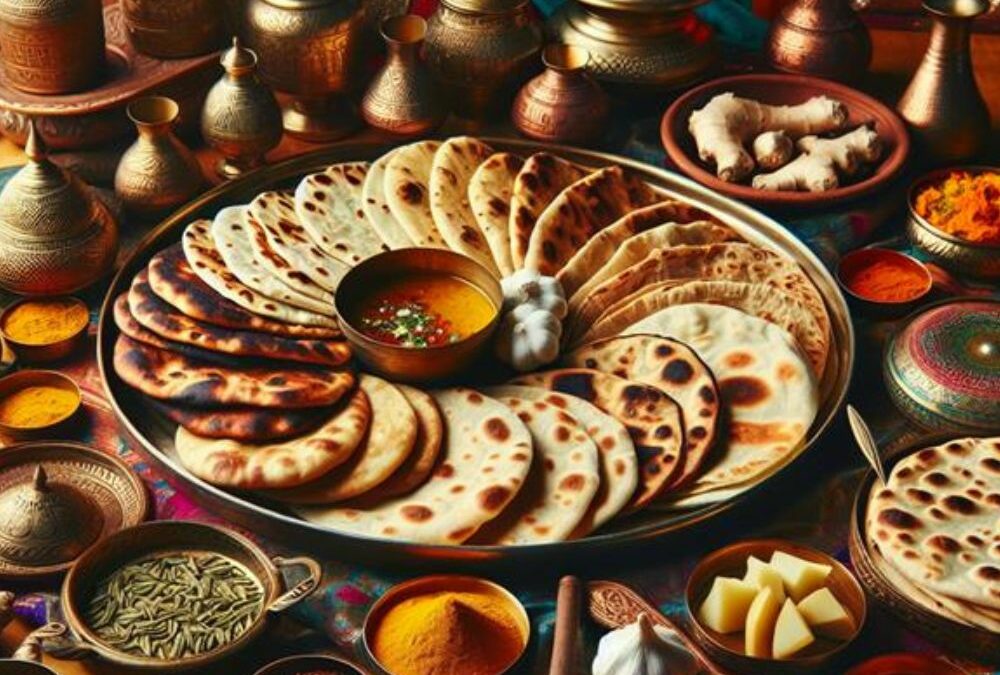Naan and Beyond: The Art of Indian Breads

Curries of the Subcontinent: A Spicy Odyssey
February 8, 2024
The Royal Feast: a Journey Through India’s Biryani Varieties
February 8, 2024The culinary landscape of Indian breads, with its fascinating variety and nuanced flavors, is an expanse that extends well beyond the familiar realms of naan. Rooted deeply in the cultural fabric of the subcontinent, this array of breads, varying in texture, ingredients, and techniques of preparation, mirrors the diversity of its people. From the fluffy and soft naan cooked in the intense heat of a tandoor oven to the earthy whole wheat roti, baked on a traditional flat iron skillet, or the crisp, deep-fried puris, each regional bread has its own unique story to tell. While we begin our journey with naan, the exploration does not stop there, as the art of Indian food bread-making is an enthralling narrative that unfolds across the subcontinent’s vast geography, inviting us to further investigate its rich tapestry.
Exploring the Diversity of Indian Breads
Encompassing an astonishing array of regional variations, the diverse world of Indian breads offers a multitude of distinct flavors, textures, and preparation methods that reflect the rich culinary heritage of the subcontinent. From the hearty, leavened naan of the north, to the thin, crisp dosas of the south, each region’s bread serves as a delicious testament to their unique food traditions. The eastern states boast of puffy, fried puris, while the western regions specialize in soft, griddled rotis. Some breads are simple and unadorned, while others are stuffed with a variety of fillings or flavored with spices. This myriad of breads, each with its own identity and story, invites you to partake in India’s culinary journey, fostering a sense of belonging and unity through shared food experiences.
The Cultural Significance and Evolution of Indian Breads
While the diversity of Indian breads is a testament to the country’s rich culinary repertoire, it also carries profound cultural significance, evolving over centuries in response to socio-economic changes, regional influences, and historical events.
* The humble Roti, a staple in Indian households:
* This bread is a symbol of sustenance and survival, a testament to the agricultural roots of Indian society.
* The elaborate Naan, a mark of royal influence:
* This bread, often associated with festive occasions, signifies the indulgence of the Mughal era and the rich confluence of cultures.
Connecting with these stories, one not only savors the delightful flavors of Indian breads but also appreciates the cultural tapestry they represent, fostering a sense of belonging to a shared, evolving culinary heritage.
Conclusion
In conclusion, the intricate art of Indian breadmaking reflects the cultural richness and diversity of India. Spanning from the fluffy naan to the crisp dosa, these breads have evolved over millennia, embodying regional nuances and preserving culinary traditions. Remarkably, it is estimated that over 400 distinct types of breads are consumed across the subcontinent, a testament to India’s vibrant culinary heritage. This statistic underscores the integral role bread plays in the Indian food gastronomic narrative.

